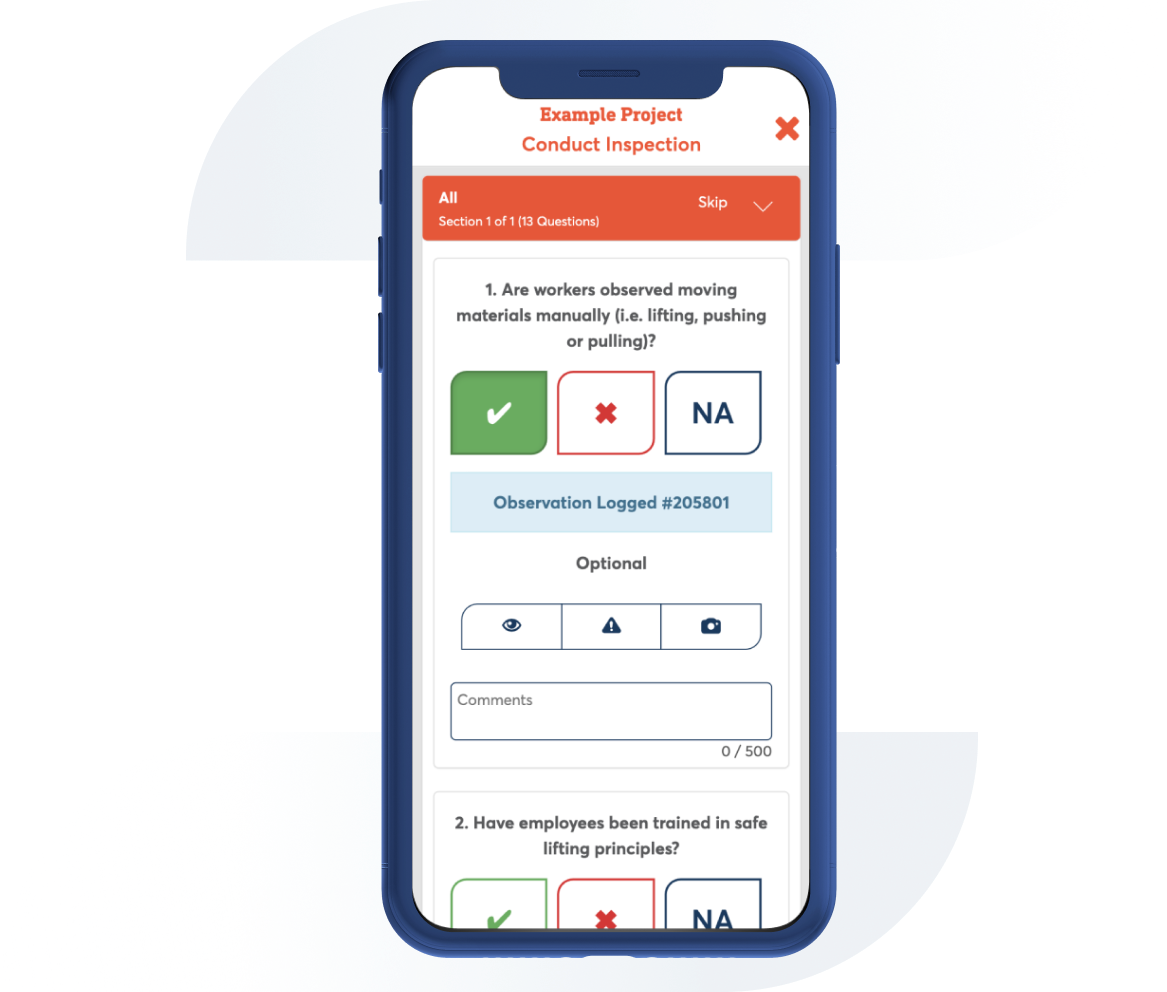Emergency Equipment Inspection
Contributor: Safesite Jurisdiction: OSHA
Follow this inspection to make sure all emergency equipment such as fire extinguishers, emergency back-up lighting, and eyewash/shower stations have been properly tested and are in working order.

Template Preview
1. Facilities Maintence Technicians, a Certified Fire Protection contractor or EHS is performing required fire prevention program activities at the facility?
Actions
2. Portable fire extinguishers are inspected by a competent Fire Protection specialist or contractor annually?
Actions
3. Are monthly visual inspections conducted and documented to ensure that fire extinguishers are in place, fully charged, undamaged and that they have not been tampered with or discharged?
Actions
4. Does each extinguisher have a tag or label securely attached that indicates the month and year the inspection, maintenance, states that recharging was performed and identifies the person performing the service?
Actions
5. Are portable fire extinguishers mounted, located, and identified so that they are readily accessible?
Actions
6. Are portable fire extinguishers fully charged, operable, and kept in their designated places at all times?
Actions
7. If fire extinguishers are enclosed in cabinets, is access to the cabinet unobstructed and is the cabinet clearly visible?
Actions
8. When employees are expected to use fire extinguishers, have they been trained in the general principles of fire extinguisher use and the hazards involved with incipient stage fire fighting?
Actions
9. Are emergency lighting units (I.e. EXIT lights and emergency lights) functionally tested at least monthly by pushing the test button for 30 seconds and recording the result?
Actions
10. Are emergency lighting units functionally tested at least annually for a minimum of 1 hours if the emergency lighting system is battery powered?
Actions
11. Are emergency ighting unit testing records available for inspection by the Authority Having Jurisdiction (AHJ)?
Actions
12. Does the emergency shower/eyewash station show any physical signs of chemical contamination?
Actions
13. Are the eyewash covers in good condition, and do they pop off when water is turned on?
Actions
14. Does the emergency shower/eyewash station supply water at a temperature between 60 and 100 degrees Fahrenheit?
Actions
15. Is the emergency shower/eyewash unit installed within 10 seconds of travel from a likely point of contamination?
Actions
16. Are emergencyshower/eyewash unit testing records available for inspection by the Authority Having Jurisdiction (AHJ)?
Actions
17. Do all emergency Exit route doors kept unlocked from the inside while the building is occupied
Actions
18. Are all emergency Exit route hallways and corridors kept free from storage of materials or equipment that could impede emergency egress?
Actions
19. Write Comments or Remarks here:

Can't find what you are looking for?
